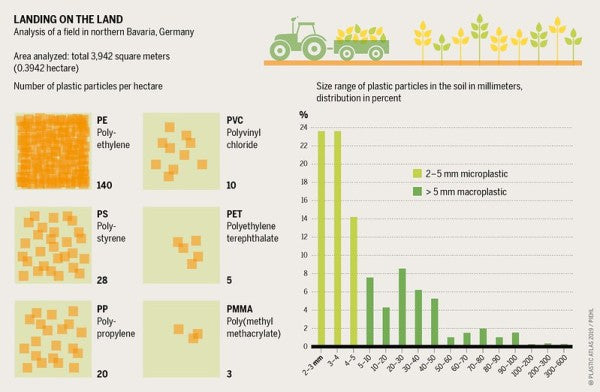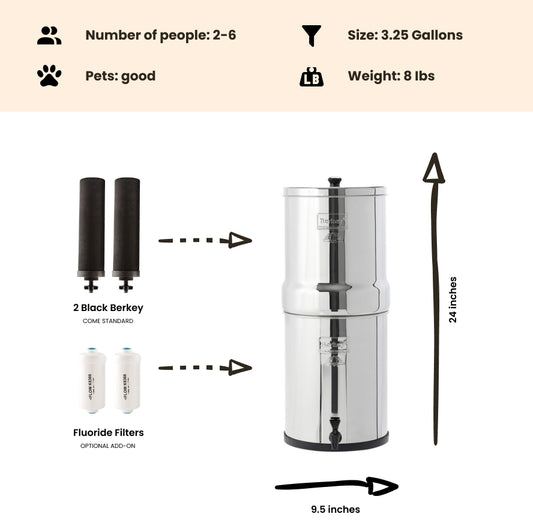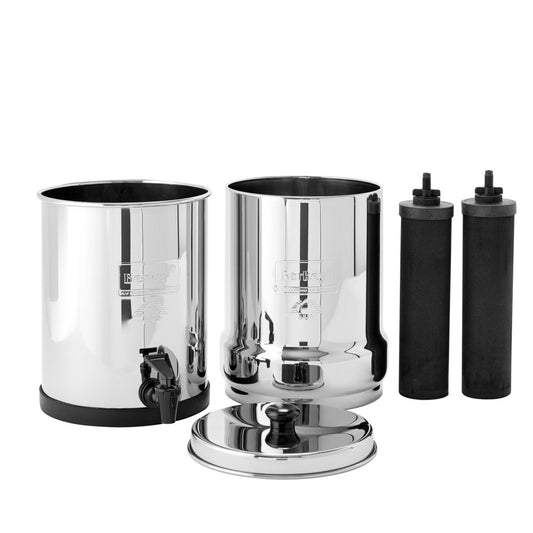
Invisible Nanoplastics in Drinking Water
By Dan DeBaunShare
A new study conducted by researchers from Washing State University shows that nanoplastics — tiny invisible plastic particles — of the more common plastics in use tend to travel through water systems, particularly freshwater systems, or settle in wastewater sediments, finally ending up in sewage sludge deposited on landfills or used on agricultural lands as a nutrient-rich fertilizer. Neither outcome is good, as these plastic deposits can make their way into freshwater systems and impair the quality of drinking water. An investigative report titled "Invisibles: The Plastic Inside Us", released by Orb Media in 2017 revealed that 94% of US tap water contains invisible nanoplastics.
"We are drinking lots of plastics," said Indranil Chowdhury, an assistant professor in WSU's Department of Civil and Environmental Engineering, who led the research. "We are drinking almost a few grams of plastics every month or so. That is concerning because you don't know what will happen after 20 years."

Plastic pollution in the process of breaking down into microplastic particles.
It is estimated that around eight trillion bits of microplastic are discharged from wastewater treatment facilities daily, ending up in aquatic systems. These tiny plastic particles can originate from larger pieces of plastic as they degrade and break down in the environment, or from tiny plastic microbeads that are incorporated into personal care products such as face scrubs, toothpaste and shower gels.
For the study, which was recently published in the scientific journal Water Research, the research team tracked the path of tiny nanoparticles of polystyrene and polyethylene, used to manufacture a large number of common household products including kitchen appliances, personal care products, disposable polystyrene cups, plastic bags and other forms of packaging, that ultimately end in freshwater systems. They wanted to learn more about how these tiny nanoplastic particles behave when exposed to various conditions, for example salt water or water that is high in organic matter.
"We're looking at this more in a fundamental way," Chowdury said. "Why are they becoming stable and remaining in the water? Once they're in different types of water, what makes these plastics remain suspended in the environment?"
The authors discovered that while pH of water doesn't affect the fate of nanoplastics, the presence of salt or natural organic material play an important role in influencing the movement of nanoplastic particles and/or how they settle. According to Chowdury, while it is however evident that these tiny plastic particles remain in the environment, the ecological and health consequences of that is unkown.
"Our drinking water plants are not sufficient at removing these micro and nanoscale plastics," said Chowdury. "We're finding these plastics in the drinking water but we don't know why."
The researchers have received funding from the State of Washington Water Research Center to assess measures for removing nanoplastic from water. In the meantime, Chowdury encourages people to reduce their consumption of single-use plastics and reuse plastic wherever possible, which will ultimately reduce the impact of nanoplastics originating from discarded plastic that gradually breaks down in the environment.
Nanoplastics in Drinking Water - Get Rid of Them Yourself
According to some studies, bottled water contains more microplastic than tap water. However, the available information shows that the health risks it can cause, both its absorption by the body and the chemicals associated with it, are minimal.
While most nanoplastic is filtered by the city's treatment plant, a preventative countermeasure such as a home water filter like Berkey may be able to assist further.
Journal Reference
Mehnaz Shams, Iftaykhairul Alam, Indranil Chowdhury. Aggregation and stability of nanoscale plastics in aquatic environment. Water Research, 2020; 171: 115401 DOI: 10.1016/j.watres.2019.115401
-
Regular price $234.00 USDRegular priceUnit price / per
-
Regular price $327.00 USDRegular priceUnit price / per
-
Regular price From $367.00 USDRegular priceUnit price / per
-
Regular price From $408.00 USDRegular priceUnit price / per
-
Regular price From $451.00 USDRegular priceUnit price / per
-
Regular price From $478.00 USDRegular priceUnit price / per
-
Regular price $332.50 USDRegular priceUnit price / per
$350.00 USDSale price $332.50 USDSale

Dan DeBaun
Dan DeBaun is the owner and operator of Big Berkey Water Filters. Prior to Berkey, Dan was an asset manager for a major telecommunications company. He graduated from Rutgers with an undergraduate degree in industrial engineering, followed by an MBA in finance from Rutgers as well. Dan enjoys biohacking, exercising, meditation, beach life, and spending time with family and friends.
~ The Owner of Big Berkey Water Filters
















